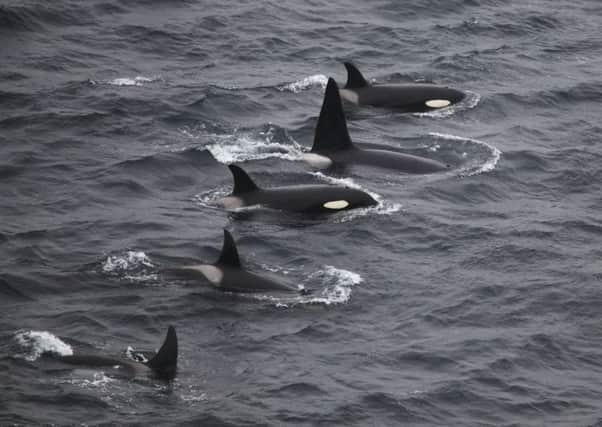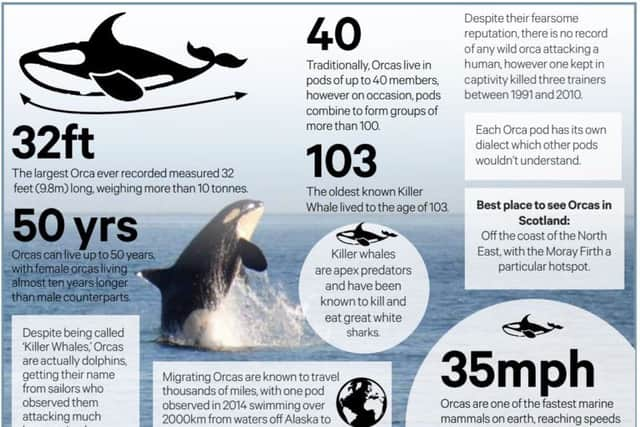Wildlife enthusiasts head to Caithness hoping to spot orcas


Teams of experts and volunteers will take up key positions on boats and coastlines around Caithness to take part in a yearly survey of killer whales, or orcas.
There have already been a number of sightings of the animals in Scottish waters so organisers of Orca Watch, which begins today and runs until 28 May, are hopeful that spotters will be rewarded for their efforts.
Advertisement
Hide AdAdvertisement
Hide AdOrcas, which despite their common name are actually from the dolphin family rather than whales, are voracious predators at the top of the food chain.


They feed on seabirds, squid, octopuses, turtles, sharks, rays and fish as well as marine mammals such as seals and dolphins.
There have been a number of sightings of whales and dolphins, known collectively as cetaceans, in Scottish waters in recent months.
Amazing footage of orcas feeding just off the shoreline in Shetland just a couple of weeks ago has been widely shared on social media.
The rare appearance of a giant humpback whale, seen breaching in the Firth of Forth, also sparked massive public interest. But the Pentland Firth is one of the best locations in the UK to see a range of whale and dolphin Risso’s dolphin, humpback whale, minke whale and orca can often be seen from the shore.


Orca Watch, run by the charity Sea Watch Foundation, is now in its sixth year.
Members of the public are being invited to join in the surveys, which form part of one of the biggest and longest-running citizen science projects in the world.
The hardy team of spotters, on the ferries, cliffs and headlands, were rewarded with a range of sightings during last year’s count.
Advertisement
Hide AdAdvertisement
Hide AdA number of orcas were recorded, along with minke whales, common dolphins, harbour porpoise and a possible humpback whale joining the list of other cetaceans seen during the week-long event.
The star attractions were an Icelandic female and her pod, including a new baby, known to researchers as 019 or Mousa.
She is a very distinctive animal with notch shaped like a half-moon cut out of her dorsal fin. Evidence suggests Mousa and her family have been making this annual journey for the past few years, leaving the herring-rich waters of Iceland to head south at a time that coincides with the common seal pupping season in Scotland.
In 2016 the pod ventured deep into the Moray Firth and was spotted just a few miles off Inverness - the furthest south it has ever been recorded.
“It is wonderfully exciting to see a whale or dolphin in the wild for yourself, and although it takes both luck and patience - and many layers of warm clothes - the rewards are worth it,” according to Anna Jemmett, Sea Watch Foundation volunteer and organiser of this year’s event.